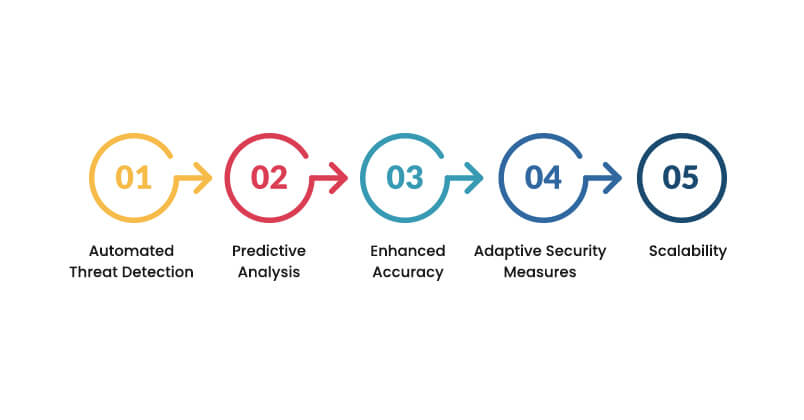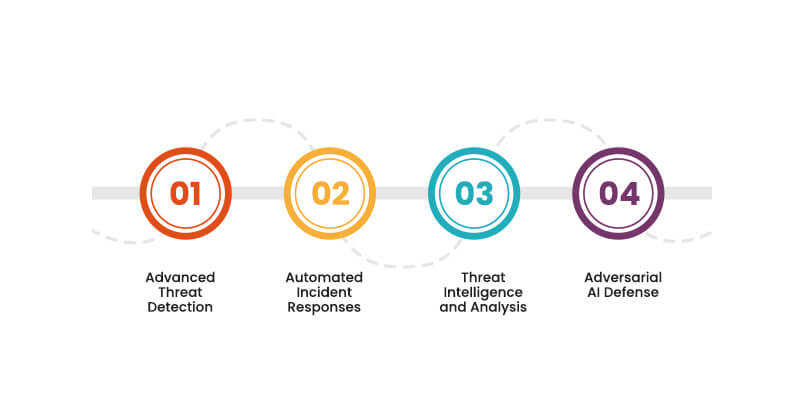-
solutinos
-
Hire
Frontend Developer
Backend Developer
-
NodeJS Developer
-
Java Developer
-
Django Developer
-
Spring Boot Developer
-
Python Developer
-
Golang Developer
-
Ruby on Rails Developer
-
Laravel Developer
-
.NET Developer
Technology
-
Flutter Developer
-
React Native Developer
-
Xamarin Developer
-
Kotlin Developer
-
Cross-Platform Developer
-
Swift Developer
-
MongoDB Developer
-
C Developer
-
Smart Contract Developers
Cloud
-
-
Services
Mobile Development
Web Development
- Work
-
Multi Services App
-
Food Delivery App
-
Grocery Delivery App
-
Taxi Cab Booking App
-
Multi Services App
-
OTT Platform APP
-
Social Media APP
-
Freelance Service App
-
Car Rental App
-
Medicine Delivery App
-
Liquor Delivery App
-
Sports Betting App
-
Online Coupon App
-
eLearning App
-
Logistics & Transportation App
-
Courier Delivery App
-
On-Demand Real Estate App
-
E-Wallet APP
-
Online Dating App
-
Handyman Services App
-
-
Process
-
Company

Quick Summary : This blog explores the impact of AI and ML on cybersecurity, highlighting advancements in threat detection, automated incident responses, and behavioral biometrics. It also addresses challenges like data quality, adversarial attacks, and system integration, showcasing how AI/ML development companies are revolutionizing cybersecurity to protect against evolving threats.
AI and ML are evolving very quickly and affecting industries, including cybersecurity. New threats are emerging, and older threats are evolving. Simple security methods do not work, and hence, AI and ML must be adopted. The application of AI in the cybersecurity market is expected to be USD 133.8 billion by the year 2030. This means that AI has a huge market, especially in cybersecurity.
This blog focuses on explaining how AI and, specifically, ML affect cybersecurity in terms of opportunities, risks, and prospects.
What is AI/ML?
Artificial intelligence can be defined as the simulation of human intelligence in the system's behavior in a real-world domain, such as seeing, thinking, and deciding. ML is a subset of AI that deals with building models that enable a system to learn and develop decision-making methods. Machine learning models are improved by continuously feeding data into the system.
AI and ML technology is expected to penetrate the market shortly. The global ML market is projected to reach USD 209.91 billion by 2029. This projection proves the continuity and development of AI and ML technologies in various industries due to the changes they render to business processes and improving cybersecurity systems.
Benefits of leveraging AI/ML in cybersecurity

AI and ML development has positively changed cybersecurity, enhancing threat detection, analysis, and efficiency. These technologies allow custom AI/ML solutions to address new threats and grow with today’s businesses.
AI ML development services help turn security systems into machines that monitor and identify threats while processing big data in real-time. Machine learning algorithms can discover suspicious patterns and threats that a regular approach would overlook AI/ML solutions architects are responsible for shaping these structures to grow, establishing them as a crucial component of present-day cyberspace security. A new survey revealed that 69% of organizations say that AI and ML are required to deal with cyber threats, marking the reliance of contemporary cybersecurity on these innovations.
Predictive Analysis
An AI/ML development company uses predictive analysis to predict future cyber threats that may likely occur. This allows the AI and ML solution providers to look into historical data and know the weak points likely to be experienced. Such an approach enables organizations to put into practice specific AI/ML solutions increasing their protection against new threats.
Enhanced Accuracy
AI & ML solutions improve threat detection accuracy by reducing false positives. Machine learning algorithms refine their detection models over time, leading to more precise identification of malicious activities. This ensures that security teams can focus on genuine threats, optimizing their response efforts. AI-powered security systems have reduced false positives by 95%. It allows security teams to focus on genuine threats and optimize their response efforts.

Do You Want to Stay Ahead of Cyber Threats with Advanced AI Solutions?
Contact us Now! Contact us Now!Adaptive Security Measures
AI and ML development services and solutions offer adaptive security measures that evolve with emerging threats. AI/ML solutions architect systems capable of continuous learning, ensuring that cybersecurity defenses remain robust. This adaptability is crucial for combating sophisticated cyber-attacks and safeguarding sensitive data.
Scalability
AI ML technology solutions are flexible because organizations can build up their cybersecurity measures over time. For a small business, the AI/ML development companies ensure that the solutions given can be scaled up to meet the demands of a large enterprise. This scalability ensures that security measures can remain effective regardless of whether the network is small or large or the amount of data transmitted.
Challenges of Integrating AI and ML in Cybersecurity
While AI and ML technology solutions offer substantial benefits in cybersecurity, integrating these technologies presents several challenges. AI/ML development companies must navigate issues such as data quality, threat evolution, and system integration to maximize the effectiveness of AI & ML services in safeguarding digital environments.
Insufficiency in Data Quality and Quantity
AI/ML technology uses big data to build models as a backbone of its applied strategies. However, poor data quality or volume can pressure artificial intelligence users' efficiency. For instance, it is wrong to undertake a prediction process using biased or partial data since this will be counterproductive to cybersecurity. The failure rate of AI projects is 70% resulting from poor data quality; thus, data engineering plays a crucial role in AI & ML services.
Threat Evolution
Cyber threats are always moving and often evolve faster than their AI and ML counterparts. Although AI/ML technology may develop and is not confined to traditional static solutions to threats, new threats are emerging too quickly. AI and ML consulting services have to update them frequently and ensure that no sophisticated attack gets through to the network.
Adversarial Attacks
The problem of adversarial attacks is a concern in the broader AI/ML technology fields. This is an attack where the input data is altered to present a wrong image to the machine learning model and give it an incorrect decision. Such vulnerabilities can be manipulated by cybercriminals, which creates the impression that the AI ML technology solutions are not very reliable.
Interpretability and Transparency
Another issue of AI/ML technology adoption for cybersecurity is the “black box” phenomenon, especially in deep learning and natural language processing (NLP). AI/ML development companies face challenges in making these models explainable or transparent to the business community and end-users. These aspects are critical in gaining the much-needed confidence from stakeholders and meeting regulatory requirements.
Integration with Existing Systems
Integrating AI & ML services with existing cybersecurity infrastructure is another challenge. Legacy systems may not be compatible with modern AI/ML technology, requiring extensive modifications and data engineering efforts. AI & ML consulting services must carefully plan and execute the integration to ensure seamless operation without disrupting existing security measures.
Future of AI and ML in Cybersecurity

AI and ML have a bright future in cybersecurity and the way threats are identified and prevented is set to shift. It is thus clear that as dedicated developers of these technologies as the AI ML developers proceed further in these technologies enhancement, their contribution to cybersecurity will be ever crucial. Let’s look at all that awaits the world shortly and ideas to be implemented.
Advanced Threat Detection
AI is used in cybersecurity to pass on threat detection beyond ordinary systems. The role of artificial intelligence in cybersecurity is not constant as AI ML developers use big data, computer vision, and data science and analytics to design models that can analyze complex threats. In the future, such systems will include real-time model training and deployment that makes them respond immediately to new threats. This evolution will be very effective in the aspect of cybersecurity as well, to make threat detection much more effective and proactive.
Automated Incident Responses
The impact of AI on cybersecurity will also embrace the ability to respond to incidents automatically. This means that AI-powered systems will be able to counter threats without human intervention, thereby saving a lot of time to counter the attacks. The AI/ML development businesses are trying to introduce the idea of AI-powered chatbots and intelligent systems to perform pre-programmed security tasks instantly. This will of course improve response times but this will also save our human resources for more important activities.
Threat Intelligence and Analysis
AI and ML will be essential in advancing threat intelligence and analysis. By processing vast amounts of data in real-time, AI/ML development companies will create systems capable of predicting and analyzing potential threats before they materialize. Big data and advanced model deployment techniques will allow these systems to provide actionable insights, helping organizations stay ahead of emerging threats.
Adversarial AI Defense
As AI technology becomes more prevalent, attackers use AI to outmaneuver security systems. In response, AI ML developers focus on creating robust adversarial AI defenses. Future cybersecurity systems will include models trained to recognize and counteract these sophisticated attacks, ensuring that AI's role in cybersecurity remains strong and effective.
Conclusion
AI and ML are transforming the cybersecurity world, by providing better protection, sharpened sensitivity for threats, and the ability to make intelligent changes. All in all, integrating these technologies is not without limitations but the advantages are far outweighing the disadvantages. The increased and dynamic cyber threats mean that AI and ML will be the key to protecting our digital landscape.
Do you want to Protect Your Business with AI-driven cybersecurity?
Frequently Asked Questions
-
Can AI completely replace human
cybersecurity experts?
human specialists. Most development companies work to create systems for process automation, including threat identification and management of incidents. Still, humans must be involved in decision-making, understanding context, and problem-solving since AI often needs to improve in dealing with uncertainties.
-
What is the role of AI in
cybersecurity?
The application of AI in cyber security entails automating threat identification, increasing the precision of risks, and speeding up detection. AI and ML development companies use the technology to analyze large data sets to predict cybersecurity threats and help organizations strengthen their security positions.
-
How does AI automate incident responses in cybersecurity?
AI automates incident responses by executing predefined protocols instantly upon detecting a threat. AI/ML development companies' systems isolate affected areas, notify security teams, and initiate recovery processes without human intervention. This automation significantly reduces response times and limits potential damage from cyber-attacks.
